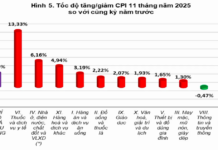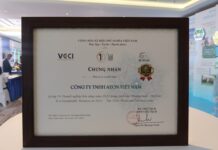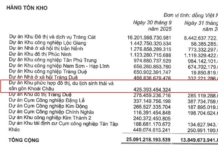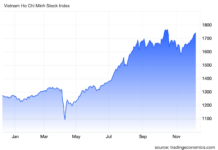Vietnam embarks on an ambitious mission to cultivate a highly skilled semiconductor workforce, aiming to capture a significant share of the global semiconductor industry.
Spearheaded by Vietnam’s leadership, the initiative targets seizing a “millennial opportunity” to establish a foothold in the semiconductor value chain amidst growing demand and disruptions in supply lines.
A Mammoth Investment
The core of this endeavor is a substantial $1.05 billion plan to train up to 50,000 semiconductor engineers or more by 2030.
This multi-year human capital “project,” proposed by Minister Dung at an international conference chaired by Prime Minister Pham Minh Chinh, represents an all-out effort to rapidly develop semiconductor expertise in Vietnam.
It entails developing 15,000 specialists in integrated circuit (IC) design, 35,000 engineers in other skill areas like packaging and testing, and around 5,000 experts specializing in using chips to power artificial intelligence applications.
The Vietnamese government will directly fund approximately $670 million of the $1.05 billion program over the next seven years. The remaining $380 million will be sourced from private enterprises, universities, and public-private partnerships.
This substantial investment demonstrates the leadership’s optimistic outlook on the semiconductor industry’s potential to drive economic growth and enhance Vietnam’s technological standing.

Leveraging Comparative Advantages
With the semiconductor industry’s global sales projected to surpass $1 trillion annually by the end of the decade and geopolitical tensions shaping supply chains, Minister Dung envisions a unique opportunity for Vietnam to capitalize on its comparative advantages and emerge as a strategic hub for chipmaking.
Among these strengths are an ample and cost-effective workforce, with over half the population under 30 years of age and approximately 1.8 million university graduates entering the job market annually.
Complementing this is a favorable regulatory environment that has attracted major semiconductor design and manufacturing service companies such as Intel, Amkor, Renesas, Qorvo, and Coherent.
Vietnam has also been expanding its diplomatic and economic ties with semiconductor powerhouses, including a joint statement with the U.S. last year highlighting chip cooperation as a priority in their upgraded comprehensive strategic partnership.
Government’s Central Role
Executing this semiconductor human capital project presents a significant operational and financial challenge for Vietnam’s public and private sectors.
A central pillar is the establishment of at least four “national shared semiconductor centers” equipped with advanced tools for R&D and training hosted at leading universities across the country’s three main regions: Hanoi, Ho Chi Minh City, and Da Nang. Additionally, 18 more basic chip training centers would be set up at technical colleges.
Constructing these facilities is expected to consume a substantial portion of the $1.05 billion budget. Beyond physical infrastructure, staffing these centers with knowledgeable instructors and “at least 1,300 internationally qualified trainers” poses a significant challenge, requiring extensive recruitment and retention efforts.
Throughout the implementation blueprint, the government plays a dominant and proactive driving role.
The proposal calls for a cabinet-level national steering committee for the semiconductor industry’s development in Vietnam, chaired by the Planning and Investment Ministry.
Nearly every major ministry, from education and science/technology to defense and foreign affairs, would assume oversight responsibilities for workforce training and industry support under this proposed top-down hierarchy.
The government would further underwrite the project’s success through scholarships for semiconductor students, tax incentives, mandated industry-university partnerships, funding for R&D and chip startups, and potentially immigration policies to attract technical experts from abroad.
“The initial investment and support of the State is an important factor for the success of the semiconductor industry and the development of high-quality human resources for the industry,” emphasized Minister Dung.
A Rapid Pivot
If implemented as outlined, the plan would mark a lightning-fast strategic shift for Vietnam’s educational system towards a new frontier industry.
The overwhelming majority of the 50,000 prospective chip engineers would be trained through “short-term, intensive” re-skilling and career conversion programs drawing graduates from closely aligned fields such as electronics, IT, and other technical disciplines.
This emphasis on rapidly developing new semiconductor specialists reflects the urgency and scale of demand anticipated by Vietnamese authorities in the coming years.
While Vietnam has produced some graduates in semiconductor fields before, these programs have been limited in scale and often served as feeders into more established overseas education pipelines.
To quickly ramp up to the envisioned levels, the project entails establishing standardized new semiconductor-focused curricula, majors, and concentrations across universities.
Equipping not just students but instructors with cutting-edge skills through boot camps, train-the-trainer programs, and international faculty exchanges will be critical.
To facilitate this skills transfer, Vietnam is heavily investing in deepening industry-academia collaborations with leading U.S. firms like Cadence, Synopsys, Google, and Meta, all of which have already partnered on pilot training initiatives.
Skepticism Persists
Despite the resolve and resources it plans to mobilize, Vietnam’s semiconductor workforce aspirations face skepticism from some who view the country as a secondary player in an industry dominated by established giants.
“Vietnam is trying but will have a tough time in terms of talent acquisition and retention. Its semiconductor dreams are great plans, very ambitious but will be extremely difficult to execute,” a director at a market analytics firm, who declined to be identified, told Vietnam Economic Times.
Other analysts have pointed to Vietnam’s comparatively modest government funding pledges compared to the $52 billion chips act marshalled by the U.S. or the substantial investments made by global leaders like South Korea, China, and the European Union.
Additionally, executives have expressed concerns about potential infrastructure bottlenecks compared to more mature chipmaking hubs, despite Vietnam’s ongoing efforts to upgrade transportation links, utilities, and digital connectivity.
Skeptics also question whether the nation possesses a robust semiconductor research culture and patent portfolio to foster cutting-edge breakthroughs.
However, as Planning and Investment Minister Dung conveyed, Vietnamese leaders have made a deliberate, calculated decision that they cannot afford to remain on the sidelines as the semiconductor industry undergoes a transformation.
The coming years will reveal whether this bold workforce investment gambit will pay off, potentially transforming Vietnam into an essential node in globalized chip production or leaving it watching from the periphery.





































